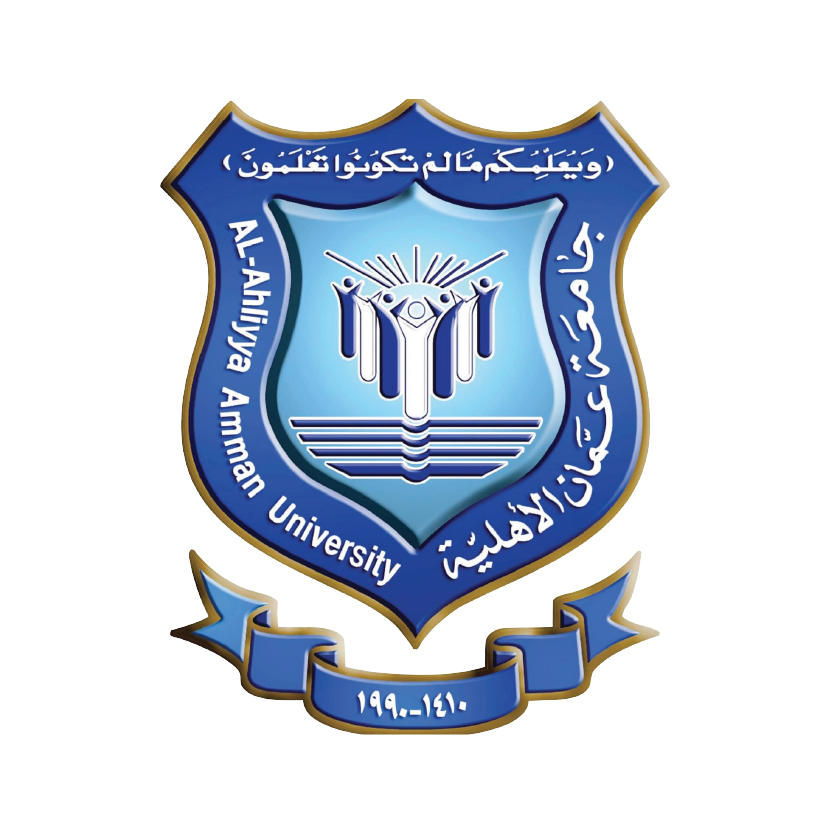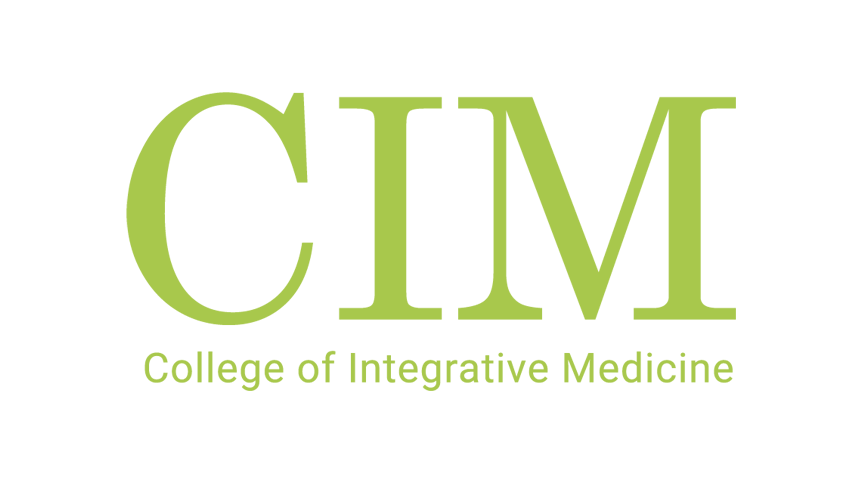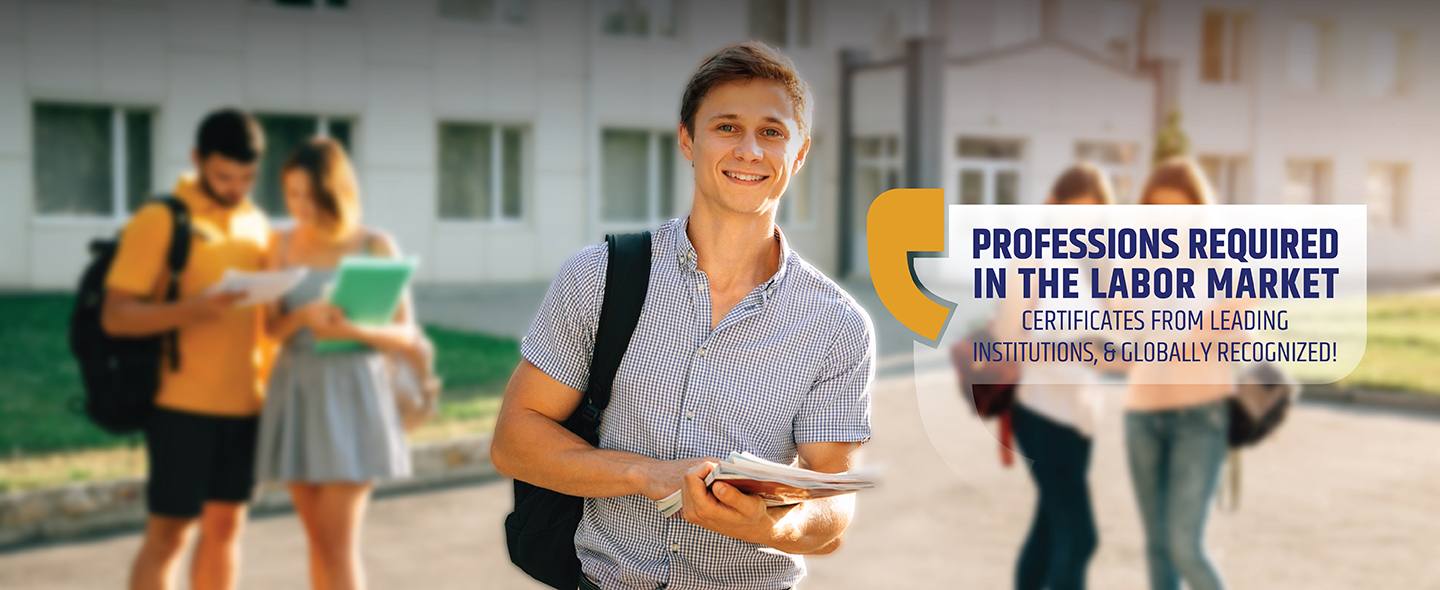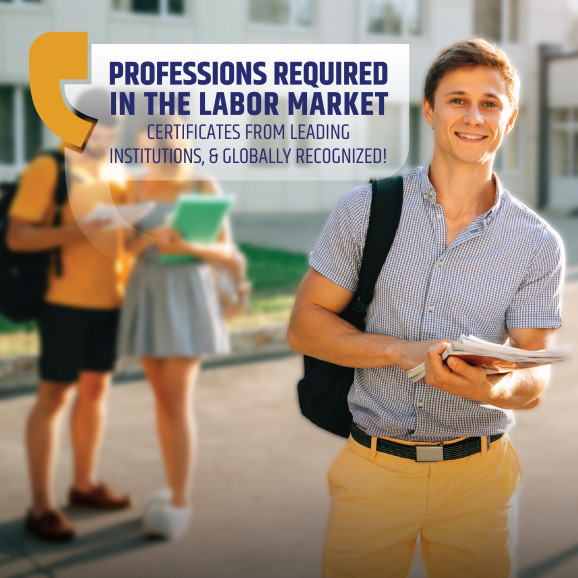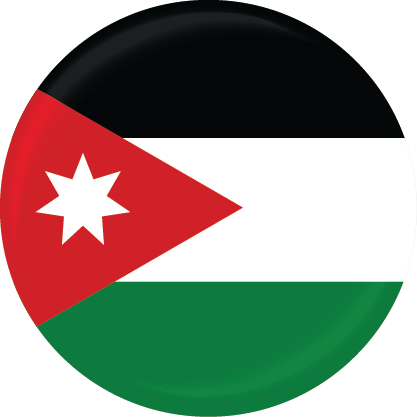Register Now! Please, fill in your personal details and we will contact you shortly
Massage, Functional Mobilization and Rehabilitation - Beginner
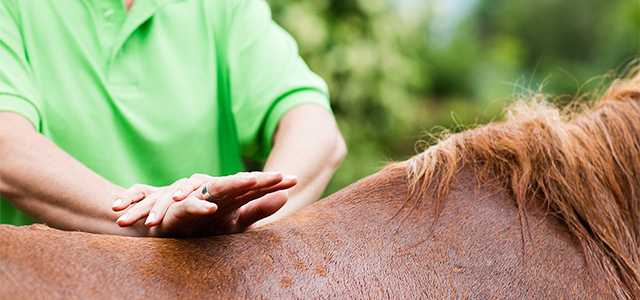
Audience
About the program
An easy to follow, practical course designed for the horse owner or handler to learn the useful skill of basic massage and functional mobilizations that will help their horse maintain a healthy musculoskeletal system and experience improved wellbeing and longevity in its working life.
Students will learn how massage therapy and functional mobilizations can help the horse physically by reducing muscles tension and stiffness alongside maintaining suppleness and flexibility; how massage techniques influence the soft tissue masses of the body and functional mobilizations help maintain healthy flexible joints.
Students will learn the physiological effects of massage. Its mechanical effect of enhancing the passage of waste laden venous blood. Its reflex effect of promoting relaxation as a result of triggering impulses in small sited nerve receptors in the skin and its stimulatory effect using specific faster brisk techniques. The causes of muscle spasms and tight muscles will be considered and how the application of massage and gentle mobilizations can help relax the muscles and soft tissues. There will be a focus on learning the main muscles in the body, understanding their function and movement and how dysfunction affects locomotion and physical comfort and health in general.
A sound foundation of knowledge will be given so that the student is able to perform a massage treatment correctly and with confidence and understand the importance of general health and safety procedures. In the classroom the student will learn about the theory of equine massage. This will cover everything from the initial contact and how to approach the horse, to understanding the horses body language and the different responses that the massage may elicit. The student will also learn in detail about the benefits of massage which are scientifically evidence based and the contraindications to massage. A general understanding of the mechanical effects of massage and the nervous reflex will also be discussed and the importance of the ‘four T’s’ which are temperature, texture, tenderness and tension and their role in the massage assessment.
Practical sessions will teach the student the principles of the different massage techniques and most importantly how and where to use them. In addition to the actual massage techniques, the student will begin to learn how to use their hands as effective and highly sensitive diagnostic and therapeutic instruments as they practice under the guidance of their instructor. They will learn how to read the horses body to bring relief to tense and painful areas and how different techniques can benefit certain conditions and problems. The student will learn a core massage routine, with an emphasis on learning how to adapt this general routine to suit each horses’ requirements. Prior knowledge of the equine muscular system will be necessary so that the student can identify issues so that they take a holistic approach to helping the horses condition improve through massage. Pre competition and post competition massage will be covered, and the techniques required for each.
Recent scientific studies have shown the importance of ‘stretching’, as it is an important and relevant part of being a successful equine massage therapist so that you can help the horse use his body correctly. The theoretic elements of this module will include the benefits and contraindications, health and safety and the mechanics of stretching.
The student will be taught the difference between passive and active stretching /
mobilization and the importance of both as part of a conditioning programme for the horse. In depth demonstrations will be given for passive and active stretching and also reflex exercises so that the student can understand how to perform each stretch and to understand the benefits of each exercise (i.e. which muscles are being activated). Stretching for the older and younger horses will also be covered. On completion of this section the student will be able to perform a programme of stretches and exercises to monitor the range of movement of the horse and to activate and stretch various joints and muscle groups. They will also be able to advise a client on suggested stretches and exercises following a massage treatment.
Students will learn how these methods can help the horse psychologically by promoting relaxation as well as the important role it can play in injury prevention, improved performance and faster recovery of the body after intense or demanding exercise. Another wonderful benefit is the power of touch helps grow trust and bond between horse and handler.
Students will gain a good understanding of the musculoskeletal system; how the skeleton and muscles work together, how to assess movement and muscles, how to do a maintenance massage and mobilizations and how to do a massage with a variety of massage techniques to address identified tension, soreness and or/ dysfunctional movement.
The course is 35% theory and 65% practical and is taught by an experienced equine therapist, first aid trainer and teacher with over 20 years teaching experience. The teaching will include subject presentations and a variety of teaching methods to help consolidate learning and understanding. The course will offer a supportive, inclusive learning environment embracing equality and diversity. A course workbook to keep for reference will be given to each student and there will be plenty of opportunity for exploratory practical learning and practice. By the end of the course, students will have a basic understanding of the horse’s musculoskeletal system and the difference between conformation and posture. They will be able to confidently assess a horse prior to doing a maintenance massage and mobilizations. They will have a better understanding and awareness that sport and leisure horses experience more stress in their domesticated lives than humans realize. Hence the importance of helping improve the wellbeing and musculoskeletal health of horses with natural holistic healthcare methods like massage.
After the course all students will have ongoing access to further help should they need it via email, telephone or Zoom.
Learning Outcomes:
Apply safe and technically appropriate manual therapeutic intervention on horses
Assess static and dynamic conformation of the horse in relation to the complexity of the musculoskeletal system, and demonstrate a working knowledge of postural and movement compensations as a factor of biomechanical constraints to gait.
Evaluate scientific evidence for clinical justification to be used in the choice of manual therapies
Understand how massage and mobilization can be used in rehabilitation and performance enhancement
 Certificates
Certificates
(Diploma) Certificate from Al-Ahliyya Amman University – the Training and Consulting Department, the International College of Integrative Medicine (CIM), Dubai Racing Club, Dubai Equestrian Club and the International Organization for Complementary Medicine (CMA) located in London, UK, which qualifies the graduates to work all over the world.
Syllabus
Day 1 | Topic | Skills focus
| Teaching techniques |
Introduction 09:00-09:30 | Course introduction. Information myself & students. Teaching and Learning methods, course expectations | Listening, communication | lecturer Presentation |
Lecture 1
09:30 – 10:15 | What is Equine Massage Therapy Learning what massage therapy is. Learning effects and benefits of massage | Listening, Critical Thinking, Problem Solving | Solo work Group work |
Lecture 2 10:15 – 10:45 | Simple Equine Anatomy Learning the horse’s body parts: skeleton, soft tissues: muscles, tendons & ligaments | Listening, Knowledge of body | Pair work Solo work |
Break - 15 minutes | |||
Lecture 2 Continued 11:00 – 11:30 | Simple Equine Anatomy Learning the horse’s body parts: skeleton, soft tissues: muscles, tendons & ligaments
|
|
|
Lecture 3 11:30 – 12:30 | Horse conformation. Learning what conformation is and how to assess it Learning what posture is and how to assess it How to observe posture in walk and trot | Listening, Comprehension Comparison |
Solo work Group work |
Lunch – 1 hour | |||
Lecture 4/ Practical 13:30 – 14:00 | Drawing the horse’s Skeleton onto the horse. | Application of knowledge | Group work |
Lecture 5 / Practical 14:00 – 14:30 | Drawing the horse’s superficial muscles onto the horse
| Application of knowledge | Group work |
Lecture 6 / Practical 14:30 – 15:00 | Practical assessment of horse’s conformation and posture | Observation Attention to detail | Group work Solo work |
Break - 15 mins |
|
|
|
Lecture 7 / Practical 15:00 – 15:30 | Practical assessment of a horse’s movement in walk and trot. Observing how muscles move
| Assessment Observation Attention to detail | Group work Solo work |
Lecture 8 / Practical 15:30 – 16:30 | Learning about chains of muscles. Recognizing the dorsal chain and the ventral chain and understanding their global effect on posture and movement
| Assessment Observation Attention to detail | Group work Solo work |
Note equipment: Practical lectures – Ideally 1 horse per student or 1 horse per 2 students.
Day 2 | Topic | Skills focus
| Teaching technique examples |
Recap 09:00-09:30 | Topics of Day 1 revised and reviewed. Recap key points of each lecture and answer any questions | Listening, communication | Lecturer presentation Group work |
Lecture 1
09:30 – 10:00 | Safety when massaging horses Keeping yourself and the horse safe Ideal environment Being aware of and listening to the horse’s reactions | Listening, Critical Thinking, Problem Solving | Solo work
|
Lecture 2 10:00 – 10:45 | Contraindications to massage When massage is not appropriate and why? | Listening, Knowledge of massage effects | Pair work Solo work |
Break - 15 minutes | |||
Lecture 3 11:00 – 11:30 | Palpating muscles to assess for tension and soreness How to palpate the muscles Recognizing signs & symptoms of sore or tight muscles | Listening, Observation Feel |
|
Lecture 4 11:30 – 12:30 | Massage techniques Learning basic massage strokes for maintenance massage sessions | Listening, Comprehension Comparison |
Solo work Group work |
Lunch – 1 hour | |||
Practical Lecture 5 13:30 – 14:30 | Lecturer demonstration of massage. Setting up for safety, palpation of muscles to assess for soreness and/or | Observation | Group work Solo work |
| tight muscles followed by a maintenance massage routine |
|
|
Practical Lecture 6 14:30 – 15:00 | Practical for students following lecturer’s demonstration. Students demonstrate safety working with the horse. They practice palpation and compare it to posture assessment | Application of knowledge | Group work Solo work |
Break - 15 mins |
|
|
|
Practical Lecture 7 15:15 – 16:00 | Students practice doing a maintenance massage | Observation, Attention to detail | Group work Solo work |
Practical Lecture 8 16:00 – 16:30 | Students feedback to group their pre massage assessment findings and post massage treatment findings. | Observation Recording Comparing | Group work Solo work |
Note equipment: Practical lectures – Ideally 1 horse per student or 1 horse per 2 students.
Day 3 | Topic | Skills focus
| Teaching techniques |
Recap 09:00-09:30 | Topics of Day 2 revised and reviewed. Recap key points of each lecture and answer any questions | Listening, communication | Lecturer presentation Group work |
Lecture 1
09:30 – 10:00 | Muscles spasms Learning about muscle spasms and why the happen How to apply massage techniques to treat muscle spasms | Listening, Critical Thinking, Problem Solving | Solo work
|
Lecture 2 10:00 – 10:30 | Further massage techniques Learning more massage techniques for helping address identified tension, soreness and/or dysfunctional movement | Listening, Problem Solving | Pair work Solo work |
Break - 15 minutes | |||
Lecture 3 10:45 – 11:30 | Review Skeleton to identify joints Learn and understand how joints move Why is joint health so important
| Listening, Observation |
|
Lecture 4 11:30 – 12:30 | Joint mobilization techniques Learn to assess and mobilize joints in the limbs Learn to assess and mobilize joints in the head, neck, back and hindquarters | Listening, Comparison |
Solo work Group work |
Lunch – 1 hour | |||
Practical Lecture 5 13:30 – 14:30 | Practical Lecturer demonstration of further massage techniques Limb joint assessment and mutilations | Observation | Group work Solo work |
| Head, neck, back and hindquarter joint assessments and mobilizations |
|
|
Practical/ Lecture 6 14:30 – 15:00 | Practical for students following lecturer’s demonstration. Students practice further massage techniques learned, joint and other body part mobilizations | Application of knowledge Attention to detail | Group work Solo work |
Break - 15 mins |
|
|
|
Practical Lecture 6 continued 15:15 – 16:00 | Practical for students following lecturer’s demonstration. Students practice further massage techniques learned, joint and other body part mobilizations
| Application of knowledge Attention to detail | Group work Solo work |
Practical Feedback 16:00 – 16:15
16:15 – 16:30 | Students feedback to group their pre joint assessment findings and post Joint mobilizations findings.
Conclusion of course. Summary of Equine Massage and Functional Mobilization benefits. Also, open question session.
| Observation Recording Comparing | Group work Solo work |
The curriculum will also cover:
The Nervous System, The Digestive System, The Respiratory System, The Cardiovascular System, The Lymphatic System, The Endocrine System, The Integumentary System, The Genitourinary System, Superficial Muscles, Deep Muscles, Fascia, Therapist Posture, Conformation, Gait Patterns, Initial Observation.
Register & Pay
Dean

Dr. med. Ldo. med. Álvaro Rubio
Citizenship:
Spaniard and German
FIELD OF ACTIVITY
Adult Cardiac Surgery - Cardiac Surgery Consultant
Vascular Surgery - Vascular Surgery Consultant
Pediatric Cardiac Surgery
Intensive Care Medicine
QUALIFICATION
Universitas Extrematurensis, Spain
Justus Liebig University, Germany
Cardiac Surgery Consultant - Bavarian State Chamber of Physicians, Munich/Germany
Vascular Surgery Consultant - Baden-Württemberg State Chamber of Physicians, Freiburg/Germany
Intensive Care Medicine Consultant - Baden-Württemberg State Chamber of Physicians, Freiburg/Germany
ADDITIONAL QUALIFICATION
Specialist in Radiation Protection
Certificate Clinical Homeopathy
MEMBERSHIP - SCIENTIFIC AND PROFESSIONAL SOCIETIES
CSN - Cardiothoracic Surgery Network
BDC - German Professional Association of Surgeons
DGTHG - German Society for Thoracic, Cardiac and Vascular Surgery
Association of Cardiac Surgeons
European Society of Cardiology
INVESTIGATION AWARD
The Pierre Grondin Award 2007
CMA President

Jayney Goddard, MSc, FCMA, FBSLM, Lic.LCCH, Dip.ACH, FRSPH
President - The Complementary Medical Association, London, UK
Jayney Goddard is President of The Complementary Medical Association (The CMA) which is the world's largest professional membership body for complementary medicine (CM), and she is widely regarded as one of the leading experts on complementary medicine and natural healthcare. Jayney has a vast depth of knowledge across the entire field of complementary medicine and can always be relied upon to provide substantiated research data during any interview, lecture or written work.
Jayney is a Fellow of the Royal Society of Medicine and a Fellow of the Royal Society for Public Health. She has a Master of Science post-graduate degree from the University of Central Lancashire and began her doctorate in January.
She was recently awarded the Complementary and Natural Healthcare Expo Award for Outstanding Contribution to Complementary Medicine - which was judged by a panel of respected complementary medical professionals and a group of high-profile captains of industry coming from backgrounds as diverse as banking, insurance and entertainment.
She has a busy practice (UK, USA and Skype) where she works uses a range of complementary medical approaches with her patients, including homeopathy, psychotherapy, nutrition, herbal medicine, Mind/Body medicine and hypno-analysis. Jayney's special clinical interests include auto-immune disease and natural anti-ageing/rejuvenation strategies.
Jayney is editor of "With Our Complements", the Journal of The Complementary Medical Association and she is a high-profile contributor to print and broadcast media.
Jayney is the complementary medical expert for various newspapers and magazines and is a regular guest on television and radio when expert opinion is required on any aspect of complementary medicine and natural health care. Adept at phone-in “open clinic” type broadcasts, Jayney is always a popular guest. She was the Discovery Channel's complementary medicine expert and provided all complementary medical content for the Granada/Boots PLC joint venture "The Wellbeing Channel". A prolific writer, her most recently published books include the international number one bestseller "Rewind Your Body Clock - The Complete Natural Guide to a Happier, Healthier, Younger You (Watkind UK / Penguin USA and Rest of world / Audiobook by WF Howes, narrated by Jayney Goddard).
Jayney has also authored two books on pandemic 'flu: the critically acclaimed "The Survivor's Guide to Swine Flu: The Complementary Medical Approach", "The Survivor's Guide to Bird Flu: The Complementary Medical Approach" and also "Complementary and Alternative Medicine: The Scientific Verdict on What Really Works", edited by Jayney and published by Collins. Jayney also edits The CMA's highly informative weekly e-Newsletter. Jayney writes the monthly Natural Anti-ageing column for Natural Health magazine and is credited by them as "The UK's leading natural anti-ageing guru".
Jayney testified for the USA's "White House Commission on Alternative and Complementary Medicine" in order to help the USA rationalize complementary and alternative medicine and all her recommendations were accepted unanimously. In the UK, Jayney is The CMA representative for the Parliamentary Group for Complementary and Integrated Medicine and she is active globally, assisting governments worldwide to rationalise their approach to ethical, responsible complementary medicine.
Jayney lectures at various medical colleges and to faculty and students at Cambridge University in the UK and the University of Miami School of Medicine in the USA. Jayney has taught, as Visiting Professor, on the Masters course at The Graduate Institute in Connecticut, USA, where faculty colleagues include Dr Bernie Siegel, Professor Rupert Sheldrake and Dr Steve Horowitz.
Jayney's Personal Mission
To raise the profile of Complementary Medicine and Integrative Healthcare so that the public and the conventional medical profession accept that these approaches are a viable health option when delivered by properly trained, professional practitioners and integrative medical doctors.
To create an environment where practitioners of excellence are regarded as professionals - true experts in their field - and are accorded the respect that they so rightly deserve.
To ensure that all those who wish to join the profession can gain access to bona fide CM (complementary medicine) colleges which offer truly excellent training.
To ensure that the public understands what constitutes outstanding complementary medical health care and has ready access to practitioners of excellence.
Memberships:
Fellow; Royal Society of Medicine,
Fellow; Royal Society for Public Health,
Founder and Co-Chair; British Society of Lifestyle Medicine
Advisory Board Member; Health Food Manufacturers Association,
Advisory Board Member; "camexpo",
Advisory Board Member and Founding Contributor; Integrative Healthcare Symposium,
Equity
Accreditation

The college of Integrative Medicine in Al-Ahliyya Amman University - Training and Consulting Department is the first college to teach natural medicine study programs in the Arab world, and is recognized by the Jordanian higher education Council, for it's excellence in Academic studies and research. It's the only college that grants diploma certificates accredited by the Jordanian higher education council.
Students reviews
About The College
The college of Integrative Medicine in Al-Ahliyya Amman University - Training and Consulting Department in collaboration with CIM is the first college in the Arab world offering Natural Medicine studies. is the first private university established in the Hashemite Kingdom of Jordan by a decree of the Ministry of Higher Education and Scientific Research in 1989.
Al-Ahliyya Amman University

Al-Ahliyya Amman University is the first private university established in the Hashemite Kingdom of Jordan by a decree of the Ministry of Higher Education and Scientific Research in 1989. The University opened its doors in 1990 with three faculties namely the Faculty of Law, the Faculty of Arts & Sciences and the Faculty of Administrative & Financial Sciences. In the following year, the Faculty of Pharmacy & Medical Sciences and the Faculty of Engineering were established. In 2001 AAU founded the Faculty of Information Technology and inaugurated the Faculty of Nursing in 2005. In 2010, AAU introduced the Faculty of Architecture and Design which was approved to include Architecture, Graphic and Interior Design specializations. By doing so, the number of faculties became eight offering 29 Bachelor programs. Moreover, the University offered eight Master’s programs the first of which was the Master Program in Law which in 2005 was part of the Graduate Studies. AAU provides students with distinguished Graduate Studies Programs and with distinctive Faculty members. To meet the administrative, financial and technical working needs in the University environment, AAU has provided qualified administrative cadres in various administrations and departments which aim to provide the best services to the university community of students and their parents as well as to the academic staff. Thus, twenty-seven years have passed since the inception of AAU in which it continued providing the local and regional markets with elite graduates who occupied important positions in local and regional institutions whether in the public or private sectors. Moreover, a number of AAU graduates have pursued their Graduate Studies in the most prestigious European and American universities. Additionally, a number of them are working in AAU and other Jordanian, regional and international universities. It is worth mentioning that the number of graduates in the various specializations that AAU offered reached (24.338) male and female students.
Al-Ahliyya Amman University is committed to develop and apply the "Quality Assurance Standards in Higher Education Institutions" and to follow any other adopted quality standards by investing human and physical energies to produce an academically and morally outstanding generation who is able to deal with the requirements of the time and to keep up with the new developments efficiently and effectively. This act aims to meet the needs of students, and to enable the University to play its role in promoting academic research, community services and to depict Jordan as a distinctive educational destination at the regional level.
CMA

The Complementary Medical Association, The world’s biggest & leading association of research, academic training&recognition of colleges & therapists worldwide in the fields of complementary & integrative medicine.
Mission & Objectives
The Complementary Medical Association's (The CMA) primary aim is to promote ethical, responsible, professional complementary medicine to the public and the medical profession.
We believe that by promoting The CMA and its Registered Members & Colleges in all categories, though the media and online in a hugely high-profile manner, we are able to help the public and doctors to realize that complementary and integrative medicine is - when delivered safely and ethically - a viable and highly desirable form of healthcare. In addition, here at the CMA, we are totally dedicated to representing "the professional face of complementary medicine" and by promoting research, education and knowledge in the field, we will help to stimulate demand for the medicine of the 21st century and beyond.
The CMA is great news for professional practitioners, ethical colleges and patients who demand and expect excellence in every aspect of treatment.
What is the CMA?
The CMA is a not-for-profit organization which means that any funds we raise, through membership fees, book, training and product sales or donations are invested straight back into the organization.
A great part of our work consists of referring public and conventional medics alike to CMA registered practitioners so that they can be assured that treatment will be delivered
by a highly qualified, insured practitioner who adheres to a strict Code of Ethics and disciplinary procedure. We call this the "CMA Referrals Scheme".
In addition, we are able to help members of the public who wish to train in the complementary medical field to access our Registered Training Schools and Colleges. We provide assistance to Schools who wish to have their courses Registered and Accredited by the CMA.
We work closely with the conventional medical profession as we ultimately believe that the most important person after all, is the patient, and we believe that by presenting the patient with good, accurate information about complementary medical approaches they can make responsible informed decisions about their own health care. It is important to remember that both complementary and conventional medicine have a great deal to offer - when used appropriately, justifiably and responsibly. Ultimately, the freedom to choose one's own health care is a vital human right which should be protected.
Our History
The CMA was established in early 1993, by Jayney Goddard, in response to the overriding lack of public and medical knowledge about the complementary medical profession. During the initial two years we devoted our time to performing the market research that would indicate whether there could be a viable way of raising the profile of ethical, responsible complementary medicine. It was vital to establish and justify whether "yet another organization" needed to exist in the already saturated complementary medical organization field.
We spent a long time analyzing the entire arena and found that nothing was being done at that time by any membership body or organization to promote practitioners
or training schools in a high profile, professional manner.
Furthermore, at that time, complementary medicine had a very unprofessional profile; somewhat akin to a cottage industry. This was a sorry state of affairs and it became rapidly apparent that The CMA needed to exist if professional complementary medicine were to stand a chance.
Here at The CMA we are a dedicated team of committed professionals (we're all qualified healthcare practitioners) and we are absolutely serious about achieving our mission. We have always had a commitment to making sure that our Members can contact us easily and will always be able to get through to a real person at the end of the phone line. In addition, our e-communications are exceptionally effective and we are able to disseminate important information to our Members extremely rapidly and efficiently.
Where are we now?
The CMA opened its doors to members at the beginning of 1995 and to date, The CMA represents the interests of thousands of practitioners in various categories - including students and 180+ Training Schools/Colleges with additional organizations approaching us regularly. We also have another membership section, "Friends of the CMA" which comprises a variety of supporters, all of whom are keen to support the work of the CMA.
The CMA has a high media profile and we constantly work with major media organizations.
We are committed to cultivating a high media profile, through which we achieve in excess of ten individual media exposures per week including TV, radio, magazines, newspapers and the Internet. Our estimated monthly reach is circa 650,000 individuals.
We are committed to thinking creatively when it comes to promoting our members and we are dedicated to working creatively when promoting our Member's interests - just one example of this is that The CMA has - over the years - even undertaken extremely high-profile promotional campaigns utilizing advertising space on London Underground trains and Docklands Light Railway.
What We Do
q Continuing Professional Development (CPD) Hugely important for us all in this profession. We offer practitioners lots of opportunities to keep their professional skills up-to-date with courses, seminars, ongoing tutorials and more by the leading lectures of UK & Europe.
q Membership ID Card, Certificate
It is vital that practitioners display their CMA certificate within their office or practice rooms to confirm their
Membership of this esteemed organization. We also
12
provide them with an ID card, which many of our Members find useful when on external site visits.
q LondonBoroughsSpecialTreatmentExemptedStatus Certain categories of practitioner are subject to requiring a “Special Treatment License” if they work in London and other cities. These licenses cost up to £1000+ and practicing without one leaves the practitioner open to a fine of up to £5000+. By registering with the CMA, after we approve their professional level and training, they are covered under our umbrella exemption – saving you thousands – and protecting them and their practice.
q CMA weekly e-Newsletter
This fantastically informative email brings practitioners the very latest news and research from around the world on all aspects of complementary medicine, natural health and wellness – and relevant conventional medical findings too.
q CMA Training / Courses
The CMA is dedicated to keeping our Members at the top of their profession, to this end we consistently offer ongoing training – with a particular emphasis on practice and training school development. CMA Members benefit from hugely discounted rates for these courses, compared to non- Members. CMA is an academic supporter of complementary medicine colleges, which meet the high criteria of the CMA, and after examining in-depth the curricula and study conditions that the college grants to students, the CMA grants a certificate of recognition to the college.
q Liaison at governmental level representing All CMA Members
The CMA is a Member of the All-Party Parliamentary Group for Complementary and Integrative Medicine in UK. This means that we are representing practitioners’ interests at Governmental level – and can shape policy within this field to support our Members. CMA Members are allowed to attend these meetings at the House of Commons by arrangement.
q Webinars, Seminars, CPD workshops and further qualifications
The CMA liaises with various respected organization who are offering further training to our Members. If we believe that these trainings are of value, we negotiate special rates for our Members as part of our Membership Benefits package.
In addition to each certificate that the graduates receive from AUEDI, each graduate also receives an international certificate from CMA.
CIM

CIM, The international college, is the leading college of Integrative Medicine worldwide. CIM accomplished a great achievement in recent years by integrating complementary medicine with traditional Western medicine, and this is certainly thanks to the most famous specialists who work at CIM. CIM College has a university atmosphere and includes professional training, exclusively in medical centers and hospitals.
CIM has relations with the most famous universities and colleges of Natural Medicine from all over the world.
At CIM, you will find large classrooms equipped with the latest and newest teaching aids, an advanced computer lab, spacious gardens, resting rooms.
The most important thing at CIM is the family atmosphere and the personalized, individual attention given to students by all lecturers, especially to make learning more comfortable.
CIM relies on qualitative education programs and cares about selecting the best lecturers and giving individual attention to each student.
CIM College has a lot of branches worldwide, on of the most important is a branch in Dubai, and under the direction of the German-Spanish Professor Alvaro Rubio, who is the most famous heart surgeon in the world and also specializes in natural medicine.
The branch in Dubai is considered the 1st college of complementary medicine in the Gulf countries. It offers additional and exclusive study programs, such as complementary medicine for equines, which are taught by the most famous lecturers from London, UK. And the branch of Al-Ahliyya Amman University in Jordan, one of the best universities in the world and the #1 Jordanian university according to The Times ranking in terms of the impact of universities, which is considered the 1st college of integrative medicine in the Arab world. It was established as a new college at the university under joint management by both parties, which makes CIM an international college well-respected all over the world, and the leading college in the world for the last 20 years.
CIM has internal monitoring committees that maintain a high educational level that students enjoy. The college is accredited by all the complementary medicine associations and by the European Natural Medicine Association as well. CIM offers scholarships to many deserving students and offers its graduates the possibility to complete their first academic degree (B.A.).
Every student gets his or her N.D. certificate at the end of their studies, which is considered the highest degree in the field of natural and integrative medicine worldwide. And exclusively for CIM college, each graduate receives a certificate from the Complementary Medical Association - CMA, which is located in London, UK.
The CMA is not only the world leader in academic research and training, but also gives accreditation to colleges and therapists worldwide, making it easier for graduates to work in this field all over the world.
